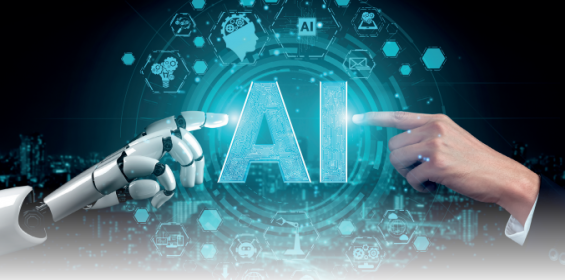Artificial intelligence and the Internet of Things (IoT) are fundamentally redesigning the manufacturing landscape by equipping manufacturers to reassess their current processes and build long-term competitive advantages that enables them to adapt to current and future challenges.
When considering potential areas for operational improvement and productive efficiency gains, manufacturers shouldn’t underestimate the impact of their machinery and internal equipment – particularly with regards to maintenance and malfunctions.
Not only does infrequent routine maintenance and the inability to put operations back online cause an immediate and frustrating end to productivity, but it also creates timeconsuming and costly delays that create the potential for competitors to bypass the manufacturer in question.
With the technicians and repairmen that are tasked with fixing machinery faults often being told the incorrect factory location, being relocated from one site to another and attending sites without cause, manufacturers should look to implement the concept of connected field service as a solution to these damaging inconsistencies.
Connected field service
Connected field service is powered by the Internet of Things and the cloud. When manufacturers choose to utilise the benefits of this technology, connected devices send information directly to the service providers about the live condition of machinery and equipment. As a result, technicians are able to determine any potential repair requirements without the manufacturer needing to have made contact.
The benefits of AI and AR
Time-efficient repairs
Usually, when a technician arrives on site to conduct the relevant machinery repairs, they must use outdated, jargon-heavy manuals to infer the necessary information to correctly identify the issue. After returning to the depot, attempting to locate the essential parts, collecting the equipment, and returning to the client site to begin completing the repair work, a vast amount of valuable time has been wasted – even then, the technician may have to revisit the site to finish the work if parts were unavailable. For a process that could take days – even weeks – to resolve, these inefficiencies could create a damaging impact for manufacturers.
Competitive advantages are paramount, and that’s where AI thrives. The unlimited access to machine details and data shared between connected devices enables field workers to systematically prepare for the necessary course of action prior to arrival, providing a welcome exchange to the usually delayed process.
What is predictive maintenance?
In practice, connected equipment will be fitted with multiple sensors that transmit data in real time, including machine health, which can then be connected to a work order management software. The algorithms used allows field workers to monitor the manufacturing equipment and anticipate when breakdowns will occur, boosting their productivity and creating what is known as ‘predictive maintenance’.
Predictive maintenance processes can also be completely automated, so if an irregularity occurs within the usual functioning of a connected machine, the issue can be immediately resolved through the process of self-healing. Against the backdrop of wider discussions around mass digital transformation, it is understandable that manufacturing leaders haven’t placed this technology at the forefront of their minds. However, it is now clear to see that these incremental, highly intelligent, and proactive processes can completely alter a company’s accuracy, time-management, productivity, and overheads – key factors in building an advantage against competing manufacturers.
Productivity gains
Powered by AI, this data-driven approach uncovers a wealth of information that allows technicians to immediately begin working on flawed machinery, and monitor equipment health, usage and disturbances before manufacturers are aware that there is a problem to report. By virtue of focusing field workers’ attention on only the most productive tasks, manufacturers are supported to do the same.
Although AI is yet to attain human-like cognition, the artificial neural networks that replicate this technology will only continue to evolve. So, not only are the benefits of AI and IoT clear throughout day-to-day manufacturing operations, but they also provide a guaranteed ally for external support and competitive pressures, all whilst developing a greater return on investment over time.
https://twitter.com/nexergroup
https://www.linkedin.com/company/nexer-group/

